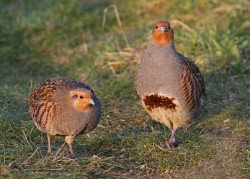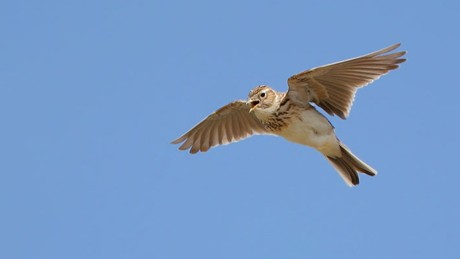European bird populations have declined sharply over the last three decades, with the more common species suffering the most losses, according to a recent study conducted by a team of researchers from the University of Exeter, the Royal Society for the Protection of Birds (RSPB), and the Pan-European Common Bird Monitoring Scheme (PECBMS). However, for some of the less common species, population numbers have increased.
Results of the study, which was recently published in the scientific journal Ecology Letters, shows that bird numbers have dropped by 421 million individuals over the last 30 years. The majority of these losses (approximately 90%) comprised thirty six of the most common and widely occurring species, including starlings, house sparrows, grey partridges and skylarks, which highlights the importance of focusing more attention on reducing the nation-wide declines of our familiar countryside birds.
Lead author, Richard Inger, an ecologist and research associate at the University of Exeter, is concerned that populations of the more common bird species are in decline, as these birds are the ones that benefit people the most. Inger stresses that this could have negative impacts for humans too. “It is becoming increasingly clear that interaction with the natural world and wildlife is central to human wellbeing and significant loss of common birds could be quite detrimental to human society”, he says.

Birds not only brighten up our day with their lively antics and a burst of morning song, they also provide us with numerous other services and benefits. Birds give us the opportunity to interact with wildlife in our urban or suburban environments; they are instrumental in helping keep agricultural pests under control; they play a vital role in seed dispersal; and scavengers, such as vultures, provide a key ecological service by removing carcasses from the landscape.
While most of the losses are associated with drastic losses suffered by a few of the more common species, not all common bird populations are in decline. In fact, population numbers of robins, blackbirds, great tits and blue tits are on the rise, according to the study. Populations of some rarer birds, such as ravens, marsh harriers, stone curlews and buzzards, also appear to be increasing, thanks to recent conservation and protection efforts launched in Europe.
According to RSPB’s Richard Gregory, who heads Species Monitoring and Research at the Centre for Conservation Science: “The rarer birds in this study, whose populations are increasing, have benefited from protection across Europe. For example, white storks and marsh harriers receive among the highest level of protection in the EU – this is why their numbers have increased. The conservation and legal protection of all birds and their habitats in tandem are essential to reverse declines,” he stresses. “This is a warning from birds throughout Europe. It is clear that the way we are managing the environment is unsustainable for many of our most familiar species.”
Petr Vorisek from the PECBMS agrees, emphasizing that the work of volunteer citizen scientists should not go unnoticed: “The study brings a very important message to conservation practice in Europe. This would not have been possible without thousands of skilled volunteer fieldworkers who count birds according to high scientific standards and contribute their data to the national monitoring schemes.”
While conservation and protection efforts typically focus on rarer species, this research highlights the importance of addressing conservation issues impacting common birds, such as species that tend to be associated with agricultural land. These sharp declines in populations of common species suggest that modern farming practices, environmental degradation and habitat fragmentation are collectively impacting bird populations.
This study analyzed records of 144 European bird species collected from thousands of individual ornithological surveys conducted in 25 countries, highlighting the importance and efforts of national monitoring schemes from different countries working together for a common goal. The authors suggest that more funding and effort should be channelled into environmental improvement initiatives on a broader scale, such as urban greening projects, and agri-environment initiatives that draw on lessons learned from previous projects. These environmental improvement initiatives should strive to deliver positive outcomes that reverse the trend of declining avian species, regardless of whether they are common or not.
Journal Reference:
Richard Inger, Richard Gregory, James P. Duffy, Iain Stott, Petr Voříšek, Kevin J. Gaston. Common European birds are declining rapidly while less abundant species’ numbers are rising. Ecology Letters, 2014; DOI: 10.1111/ele.12387




